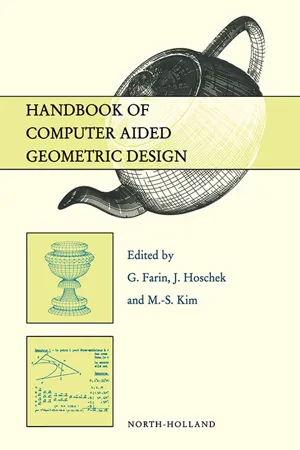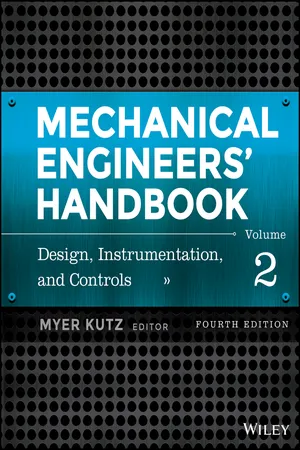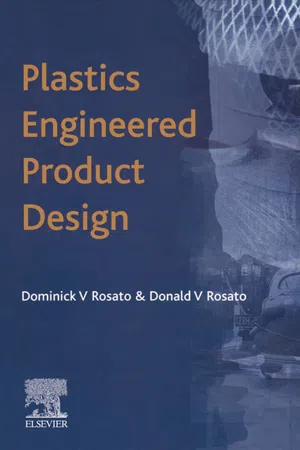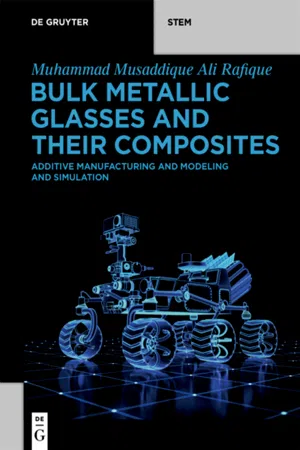Technology & Engineering
Solid Modeling
Solid modeling is a technique used in computer-aided design (CAD) to create three-dimensional models of objects with complex geometries. It represents the physical volume of an object and is used for simulating and analyzing the behavior of the object in various conditions. Solid modeling is widely used in engineering, architecture, and manufacturing for designing and prototyping products.
Written by Perlego with AI-assistance
Related key terms
Related key terms
1 of 4
Related key terms
1 of 3
6 Key excerpts on "Solid Modeling"
- eBook - ePub
- G. Farin, J. Hoschek, M.-S. Kim(Authors)
- 2002(Publication Date)
- North Holland(Publisher)
Chapter 20Solid Modeling
Vadim ShapiroSolid Modeling is a consistent set of principles for mathematical and computer modeling of three-dimensional solids. The collection evolved over the last thirty years, and is now mature enough to be termed a discipline. Its major themes are theoretical foundations, geometric and topological representations, algorithms, systems, and applications.Solid Modeling is distinguished from other areas in geometric modeling and computing by its emphasis on informational completeness, physical fidelity, and universality. This article revisits the main ideas and foundations of Solid Modeling in engineering, summarizes recent progress and bottlenecks, and speculates on possible future directions.20.1 INTRODUCTION
20.1.1 A premise of informational completenessThe notion of Solid Modeling, as practiced today,1 was developed in the early to mid-1970’s, in response to a very specific need for informational completeness in mechanical geometric modeling systems. This important notion has been promoted largely through the work at the University of Rochester [127 ] and remains central to understanding the nature, the power and the limitations of Solid Modeling. The concept may appear academic and redundant in the context of any one particular geometric application or algorithm, because it simply implies that the computed results should always be correct. But Solid Modeling was conceived as a universal - eBook - ePub
Mechanical Engineers' Handbook, Volume 2
Design, Instrumentation, and Controls
- Myer Kutz, Myer Kutz(Authors)
- 2015(Publication Date)
- Wiley(Publisher)
The nonuniform rational basis spline (NURBS) is a B-spline curve or surface defined by a series of weighted control points and one or more knot vectors. It can exactly represent a wide range of curves such as arcs and conics. The greater flexibility for controlling continuity is one advantage of NURBS. NURBS can precisely model nearly all kinds of surfaces more robustly than the polynomial-based curves that were used in earlier surface models. Surface modeling is more sophisticated than wire frame modeling. Here, the computer still defines the object in terms of a wire frame but generates a surface “skin” to cover the frame, thus giving the illusion of a “real” object. However, because the computer has the image stored in its data as a wire frame representation having no mass, physical properties cannot be calculated directly from the image data. Surface models are very advantageous due to point-to-point data collections usually required for numerical control (NC) programs in computer-aided manufacturing (CAM) applications. Most surface modeling systems also produce the stereolithographic data required for rapid prototyping systems.Solid Modeling
Solid Modeling defines the surfaces of an object, with the added attributes of volume and mass. This allows data to be used in calculating the physical properties of the final product. Solid Modeling software uses one of two methods to represent solid objects in a computer: constructive solid geometry (CSG) or boundary representation (B-rep).The CSG method uses Boolean operations such as union, subtraction, and intersection on two sets of objects to define composite solid models. For example, to create a hole in a cube, a small cylinder can be subtracted from a large cube. See Fig. 5 .Solid subtraction.Figure 5B-rep is a representation of a solid model that defines an object in terms of its surface boundaries: faces, edges, and vertices. In the case of the cube with a hole, a square surface could be created with a hole (as two mirrored surfaces) and then extruded to create the model. See Fig. 6 .Surface solid subtraction.Figure 6Hybrid Solid Modeling
Hybrid Solid Modeling allows the user to represent a part with a mixture of wire frame, surface modeling, and solid geometry. The Siemens product lifecycle management (PLM) program offers this representation feature.In CAD software, certain features have been developed to minimize the ambiguity of wire frame representations (Fig. 7 ). These features include using dashed lines to represent the background of a view or removing those background lines altogether (Fig. 8 - Yoseph Bar-Cohen(Author)
- 2018(Publication Date)
- CRC Press(Publisher)
2 Computer-Aided DesignNicholaos Bilalis and Emmanuel Maravelakis2.1 Introduction2.2 3D CAD Models and Downstream Applications2.3 Methods for Building the 3D Model2.4 Basics of Geometric and Solid Modeling2.4.1 Parametric Representation2.4.2 Bézier Curves2.4.3 B-Spline Curves2.4.4 Rational Bézier and B-Spline Curves (NURBS)2.4.5 Subdivision Curves and Surfaces2.5 Building the 3D Model2.5.1 Wireframe Modeling2.5.2 Surface Modeling2.5.3 Subdivision Modeling2.5.4 Reverse Engineering Modeling2.5.5 Parametric Feature-Based Solid/Surface Modeling2.5.6 Direct Modeling2.6 3D Product—Assembly Modeling2.7 PLM Systems and Collaborative Design2.8 Challenges in CAD Modeling2.9 ConclusionsAcknowledgment References2.1 IntroductionA computer-aided design (CAD) is considered the use of computer systems for the creation, modification, analysis, and optimization of a design (Groover and Zimmers, 1984, McMahon and Browne, 1998, Lee, 1999, Zeid, 2005). The technique was initiated at MIT by Ian Sutherland, when Sketchpad, the first system, was created within the Semi-Automatic Ground Environment research project in 1963. CAD systems were first introduced for the automation of two-dimensional (2D) drawings, but it soon became evident that 3D representation is essential, and today, the use of the 3D model is dominant in most industrial sectors driving all downstream applications. Early systems were based on the single-vendor systems with the concept of “turnkey” solutions, followed by the development of a wide range of systems and applications outside the concept of “turnkey” solutions while simultaneously advancing the data exchange between applications; today, through the introduction of Product Lifecycle Management (PLM) systems, a new type of “turnkey” solution is observed, driven by an extensive interoperability between systems and specialized applications.- eBook - ePub
- D.V. Rosato, D.V. Rosato(Authors)
- 2003(Publication Date)
- Elsevier Science(Publisher)
Today’s software developers are laced with a serious challenge concerning how to produce a safe and reliable product in the shortest possible time frame. This is not a new problem; it has simply been exaggerated in recent years by pressures from the marketplace, and the manufacturing industry certainly is not immune to those pressures. Manufacturers including throwing large budgets into software development tools and manpower have sought many solutions.Geometric modeling
Geometric modeling is one of the major uses of the CAD systems. It uses mathematical descriptions of geometric elements to facilitate the representation and manipulation of graphical images on the computer’s screen. While the central processing unit (CPU) provides the ability to quickly make the calculations specific to the element, the software provides the instructions necessary for efficient transfer of information between user and the CPU.There are three types of commands used by the designer in CAD geometric modeling. Its first allows the user to input the variables needed by the computer to represent basic geometric elements such as points, lines, arcs, circles, splines, and ellipses. The second is used to transform these elements that include scaling, rotation, and translation. The third allows the various elements previously created by the first two commands to be joined into a desired shape. During the whole geometric modeling process, mathematical operations are at work that can be easily stored as computerized data and retrieved as needed for review, analysis, and modification.There are different ways of displaying the same data on the CRT (cathode ray tube) screen, depending on the needs or preferences of the designer. One method is to display the design as a 2-D representation of a flat object formed by interconnecting lines. Another method displays the design as a 3-D view of the product. In 3-D representations, there are the four types of modeling of wireframe modeling, surface modeling, Solid Modeling, and hybrid Solid Modeling.The wireframe model is a skeletal description of a 3-D part. It consists only of points, lines, and curves that describe the geometric boundaries of the object. There are no surfaces in a wireframe model. The 3-D wireframe representations can be confusing because all of the lines defining the object appear on the 2-D display screen. This makes it difficult for the viewer to tell whether the model is being viewed from above or below, inside or outside. It is the simplest of the CAD/CAM modeling methods. The simplicity of this modeling method also implies simplicity in the database. - eBook - ePub
Engineering Informatics
Fundamentals of Computer-Aided Engineering, Second Edition
- Benny Raphael, Ian F. C. Smith(Authors)
- 2013(Publication Date)
- Wiley(Publisher)
Before computers, physical models of complex objects were often constructed in engineering offices. Scale versions of objects such as new products, buildings, bridges and refineries were created at great cost. While many applications of geometric modelling have eliminated the need for physical models altogether, some engineers employ both computer-generated and physical models for important projects. Each representation has distinct advantages that these engineers do not wish to forego. In this way, the computer model becomes an additional means for reflection, product development, fabrication and assembly. Once again, in engineering contexts, computer-aided engineering enhances rather than replaces.This chapter describes possibilities that are available for use in engineering software. Each approach has positive and negative aspects, therefore the application determines the best combination of modelling techniques. The goal is to present an unambiguous, accurate and consistent representation that can be modified easily.11.2 Engineering Applications
Important engineering applications of geometric modelling are found in CAD/CAM/BIM (computer-aided design/computer-aided manufacturing/building information modelling), robotics, computer graphics and structural analysis. These are described briefly here.- CAD/CAM/BIM:Computer systems are used increasingly to design products and control machinery in manufacturing processes. Such systems require precise product descriptions. Geometry needs to be represented as accurately as possible. CAD systems assist users in creating geometric descriptions on computers. CAM systems use representations of geometry to control manufacturing processes such as machine-tool operations. Geometric modelling is also an essential part of building information modelling (BIM) (see Section 4.5.4)
- Robotics:
- eBook - ePub
Bulk Metallic Glasses and Their Composites
Additive Manufacturing and Modeling and Simulation
- Muhammad Musaddique Ali Rafique(Author)
- 2021(Publication Date)
- De Gruyter(Publisher)
Section 4 Modeling and simulation 4.1 Why modeling and simulation? Although in use since ancient Roman times [ 946 ], modeling and simulation picked up interest and achieved pinnacle in modern-day scientific and engineering sectors with the advent of computer technology which came not more than two decades ago. Now, it has proved itself to be an important and integral part of product and part design, product development as well as prediction, utilization and enhancement of properties. Various branches of modeling and simulation, ranging from part-scale modeling which involves development of codes of theorems in advanced computing platform such as Java ®, C, C++ and MatLab Simulink ® to their simulations in customized simulation packages such as Solidworks ®, Ansys ® and Catia ® to performing complex atomistic simulations in dedicated software, have now become integral part of design procedure in major industrial clusters. Its use in research and development is also becoming an important part of the whole process to eliminate the so-called hit-and-trial” methods, which are not only waste of time but energy, materials and resources. In materials science and engineering mainly two of its branches are routinely used. These are “part-scale modeling and simulation” and “atomistic modeling and simulation.” The former is used for the complete design of complex machinery segments, equipment, assemblies, subassemblies, their materials of fabrication and property prediction in different regions as a function of extrinsic parameters such as heat, velocity, pressure and time, while the latter is used for prediction, estimation and improvement in atomic-scale properties using theories of atomic configuration and arrangement mainly relying on intrinsic parameters (specific heat/latent heat, heat of fusion, etc.)
Index pages curate the most relevant extracts from our library of academic textbooks. They’ve been created using an in-house natural language model (NLM), each adding context and meaning to key research topics.
Explore more topic indexes
Explore more topic indexes
1 of 6
Explore more topic indexes
1 of 4





